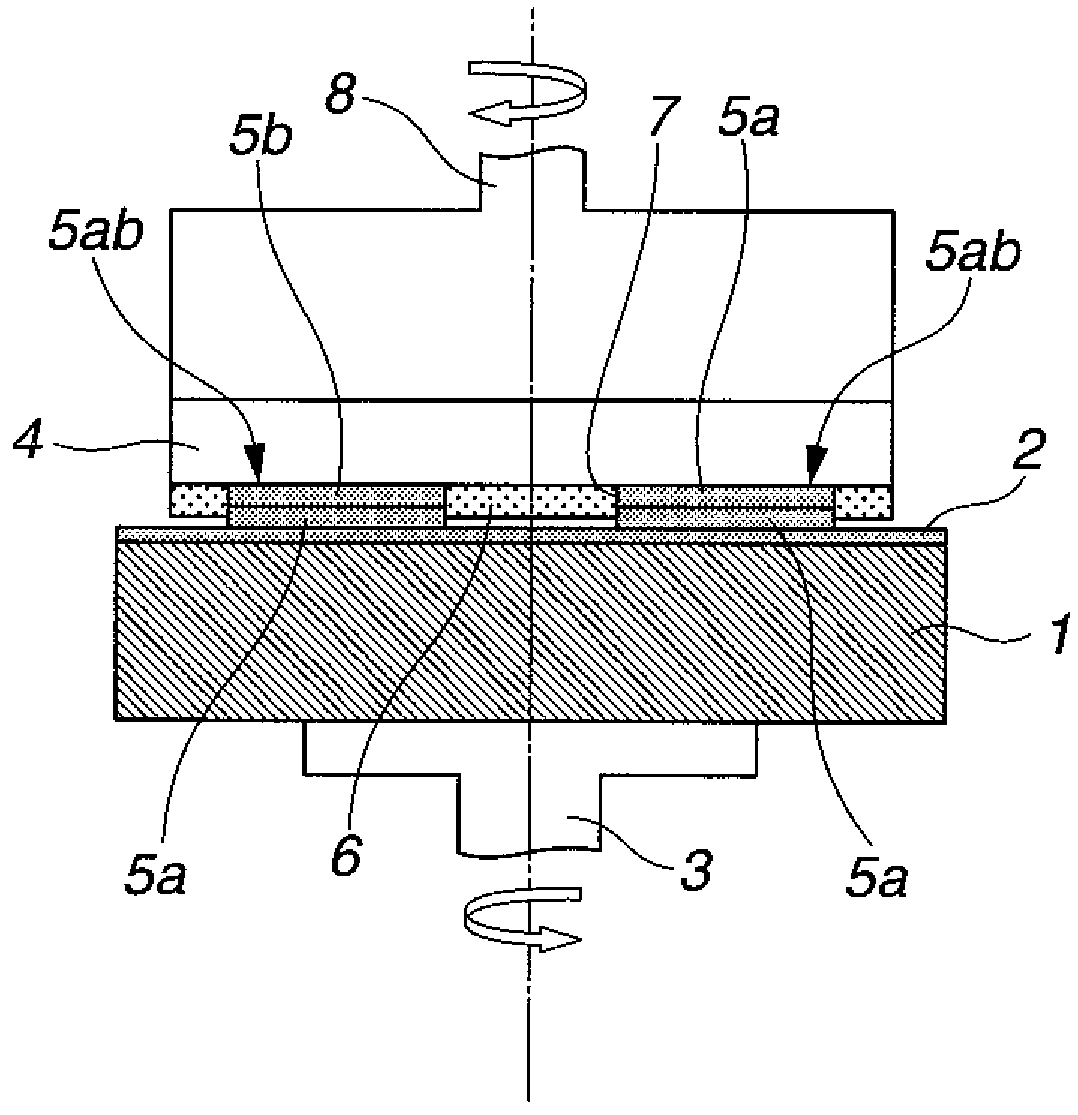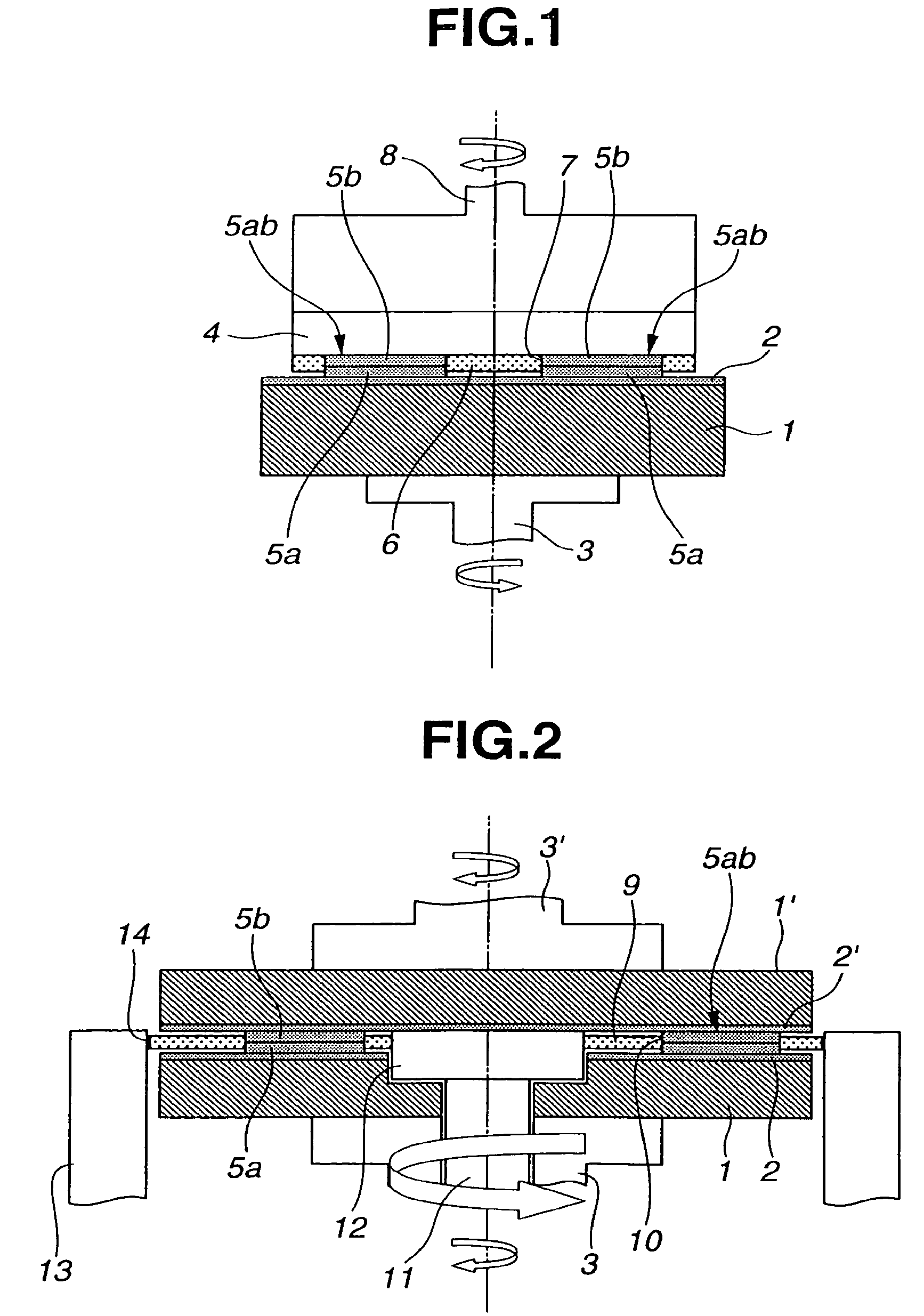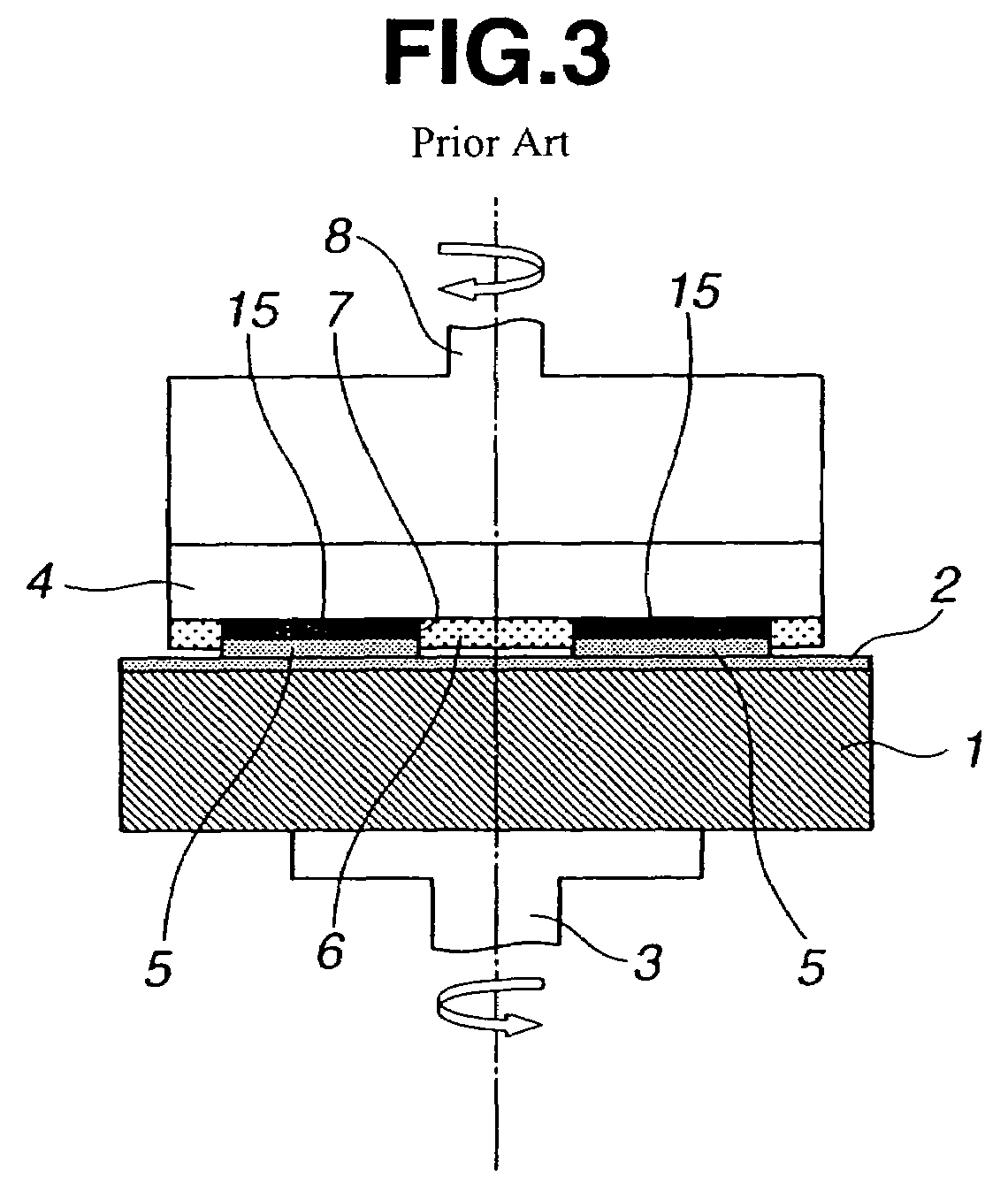Wafer polishing method and polished wafer
a technology of polishing method and polishing wafer, which is applied in the field of mirror polishing wafer polishing method, can solve the problems of reducing manufacturing yield, affecting production efficiency, and spurious disturbance of frequency response, so as to improve working accuracy, reduce yield, and high flatness or parallelism
- Summary
- Abstract
- Description
- Claims
- Application Information
AI Technical Summary
Benefits of technology
Problems solved by technology
Method used
Image
Examples
example 1
[0069]This example relates to a lithium tantalate (LiTaO3) single crystal wafer having a diameter of 100 mm (4 inches). A single crystal ingot was grown by Czochralski method and sliced into wafers using a wire saw. The wafers as sliced were lapped on a double-side lapping machine with appropriate abrasives (loose abrasive grains) to a desired thickness and until the front and back surfaces reached the predetermined roughness state.
[0070]Then two wafers lapped as above (having front and back surfaces roughened) were laminated together, with their back surfaces (identical polarized surfaces) inside, using a wax Skyliquid TW-2511 (Nikka Seiko Co., Ltd.). Although a heat treatment is involved in the lamination step, this lamination ensures that the warpage of two wafers is offset because two wafers of the same material develop thermal expansion behavior in opposite directions. The laminate was ready for the subsequent polishing step.
[0071]Then the substrate laminate 5ab was mirror poli...
example 2
[0075]This example relates to a lithium tantalate (LiTaO3) single crystal wafer having a diameter of 100 mm (4 inches). A single crystal ingot was grown by Czochralski method and sliced into wafers using a wire saw. The wafers as sliced were lapped on a double-side lapping machine with appropriate abrasives (loose abrasive grains) to a desired thickness and until the front and back surfaces reached the predetermined roughness state.
[0076]Then two wafers lapped as above (having front and back surfaces roughened) were laminated together, with their front surfaces (identical polarized surfaces) inside, using a wax Skyliquid TW-2511 (Nikka Seiko Co., Ltd.). Although a heat treatment is involved in the lamination step, this lamination ensures that the warpage of two wafers is offset because two wafers of the same material develop thermal expansion behavior in opposite directions. The laminate was ready for the subsequent lapping step.
[0077]Using a double-side lapping machine and adequate...
example 3
[0085]This example relates to a lithium tantalate (LiTaO3) single crystal wafer having a diameter of 100 mm (4 inches). A single crystal ingot was grown by Czochralski method and sliced into wafers using a wire saw. The wafers as sliced were lapped on a double-side lapping machine with appropriate abrasives (loose abrasive grains) to a desired thickness and until the front and back surfaces reached the predetermined roughness state.
[0086]Then two wafers lapped as above (having front and back surfaces roughened) were laminated together, with their back surfaces (identical polarized surfaces) inside, using a wax Skyliquid TW-2511 (Nikka Seiko Co., Ltd.). Although a heat treatment is involved in the lamination step, this lamination ensures that the warpage of two wafers is offset because two wafers of the same material develop thermal expansion behavior in opposite directions. The laminate was ready for the subsequent polishing step.
[0087]Then the substrate laminate 5ab was mirror poli...
PUM
| Property | Measurement | Unit |
|---|---|---|
| thickness | aaaaa | aaaaa |
| thickness | aaaaa | aaaaa |
| thickness | aaaaa | aaaaa |
Abstract
Description
Claims
Application Information
 Login to View More
Login to View More - R&D
- Intellectual Property
- Life Sciences
- Materials
- Tech Scout
- Unparalleled Data Quality
- Higher Quality Content
- 60% Fewer Hallucinations
Browse by: Latest US Patents, China's latest patents, Technical Efficacy Thesaurus, Application Domain, Technology Topic, Popular Technical Reports.
© 2025 PatSnap. All rights reserved.Legal|Privacy policy|Modern Slavery Act Transparency Statement|Sitemap|About US| Contact US: help@patsnap.com



